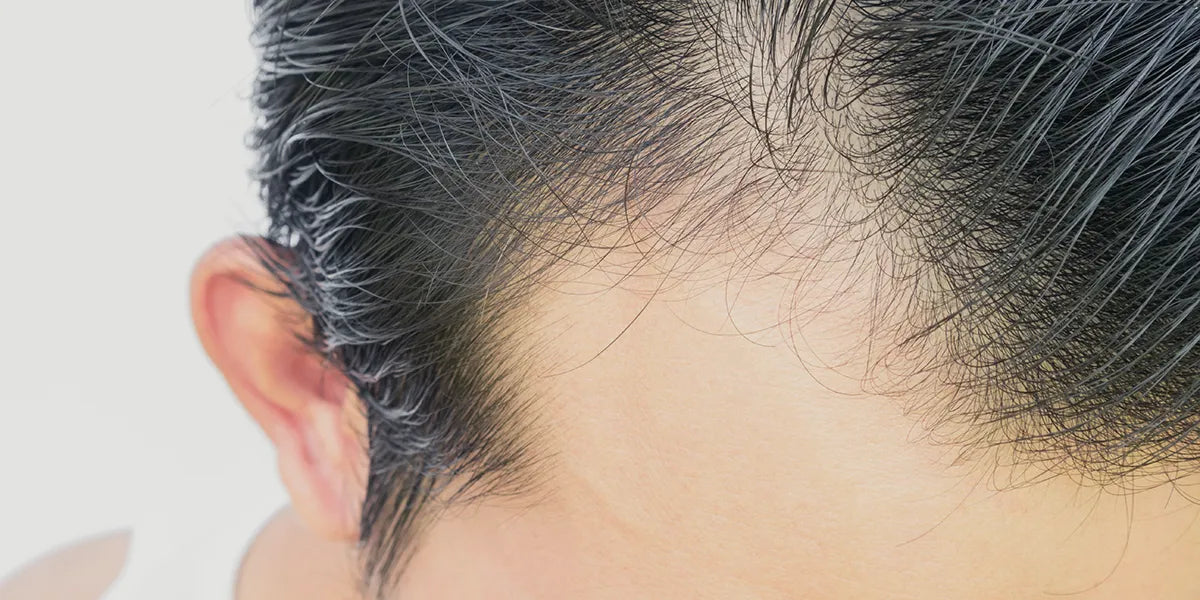Dutasteride has been used for around 20 years to treat prostate enlargement in men. But much more recently, this drug has gained popularity as an off-label treatment for male pattern hair loss.
In this article, we give you a run-down of dutasteride as a prescription medication for hair loss. Read on to understand exactly how dutasteride targets a primary cause of hair loss.
What is dutasteride used to treat?
Like its close relative finasteride, dutasteride indirectly targets a hormone called DHT (dihydrotestosterone). Both medications aim to reduce the concentration of DHT throughout the body.
Dutasteride was initially developed to treat benign prostatic hyperplasia (BPH), a medical condition that causes the prostate gland to become enlarged. Excess DHT within the prostate gland can lead to this medical condition, which is associated with pain, swelling and other symptoms.
Male pattern hair loss (off-label)
Too much DHT within the scalp can lead to a type of hair loss called androgenetic alopecia, also known as male pattern baldness.
Dutasteride is not yet approved to treat this medical condition. But licensed physicians can still prescribe oral dutasteride or compounded topical dutasteride to patients with hair loss, if you are a suitable candidate for this medication.
Our free online intake connects you with a licensed doctor who can help determine if dutasteride is right for you.


Finasteride doesn't work for everyone. Thinking about trying dutasteride?
How does dutasteride target hair loss?
Dutasteride belongs to a class of drugs called 5-alpha reductase inhibitors (5-ARIs), along with finasteride. Alternatively called DHT-blockers, dutasteride and finasteride both block the synthesis of DHT.
In elevated concentrations at the scalp, DHT ‘attacks’ hair follicles. An excess of the hormone can shorten the hair growth cycle and cause hair to fall out, or shed, prematurely.
The chemical reaction that yields DHT is possible thanks to the 5-alpha reductase enzyme (5-AR). Dutasteride binds to the enzyme to stop the production of DHT. By reducing the rate of production, dutasteride lowers the concentration in circulation throughout the body, and at the scalp.
Finasteride vs. dutasteride
The 5-AR enzyme has three unique structural variations called isoforms. Each isoform produces DHT, but is active at different locations throughout the body.
5-AR type I is responsible for DHT production mostly in the skin and within hair follicles.
5-AR type II contributes more to overall DHT production than any other isoform. It’s primarily active within hair follicles throughout the body, as well as within male sex organs (Hirshburg et al. 2016).
Dutasteride targets both of these primary enzyme isoforms, types I and II, making it more potent. Finasteride, on the other hand, only targets type II (Aggarwal et al. 2010).
It’s worth noting that dutasteride does a better job at reducing 5-AR type II activity than finasteride. One clinical study suggested that oral dutasteride is up to 3x more effective at lowering 5-AR type II activity than finasteride (Clark et al. 2004). That’s on top of targeting an additional isoform.
Dutasteride for hair loss: Takeaway
Thanks to its dual-action on the 5-AR enzyme, dutasteride is considered to be more effective at reducing overall DHT.
While finasteride remains the treatment of choice for hair loss, compounded topical or oral dutasteride can be prescribed to patients who have had little success with other medications for hair loss. You can learn more about the differences between finasteride vs dutasteride by visiting our article.




